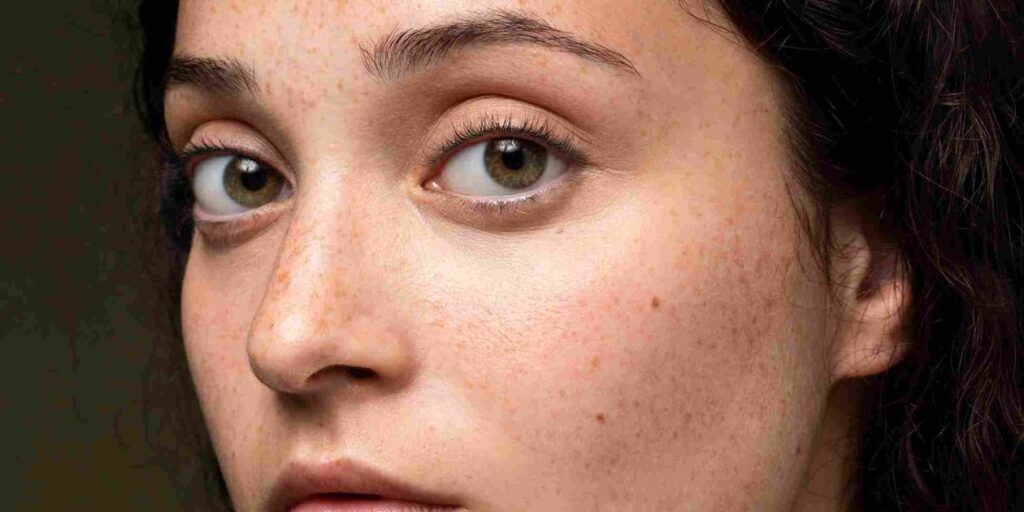Have you ever looked at your arms or legs after a sunny day and noticed tiny, confetti like white dots that weren’t there before? You’re not alone. These little marks are often white sun spots, and they’re your skin’s way of showing it has had a little too much fun in the sun over the years.
Think of it this way: your skin has special cells that produce colour, or pigment, which gives it a unique tone. But with prolonged sun exposure, these colour making factories can get worn out in small areas, leading to a loss of skin pigmentation. This results in those harmless, but sometimes puzzling, white patches. Don’t worry, though. Understanding the causes of white sun spots is the first step toward knowing how to manage them and keep your skin looking healthy and even toned. Let’s dive into what these spots are all about and what you can do.
Causes of White Sun Spots
So, what makes these little white spots appear? It’s not magic! Several things can cause them, but the biggest reason is spending too much time in the sun without protection. Think of it like a leaf that gets too much sun and a little faded. Your skin works similarly.
Too Much Fun in the Sun
Your skin has special cells that create melanin, or pigment. This is what gives your skin its beautiful, unique tone. When you’re out in the sun, these cells work extra hard to protect you from the sun’s intense ultraviolet (UV) rays by making more melanin, which gives you a tan. But after many years of sun exposure, some of these colour making cells can tire, slow down, or even stop working in tiny areas. This results in the white sun spots you see.
Getting older can also play a part. Just like our hair might turn grey, our skin’s colour making cells can get less active as we age. For some people, it’s also in their family history. If your parents or grandparents had these spots, you might be more likely to get them too. Occasionally, not having enough specific vitamins can also affect your skin’s health, but the sun is usually the main culprit.
How to Identify White Sun Spots
Figuring out if you have white sun spots is pretty simple once you know what to look for. These spots usually look like tiny, flat white dots, almost like little drops of milk on your skin. They are typically small, between 1 and 3 millimetres, and don’t cause pain or itching. You’ll often find them on your shins, arms, upper back, and fac,e places the sun tends to hit the most.
Is It a Sun Spot or Something Else?
Mixing these spots with other skin conditions is easy because many can cause light patches. For example, vitiligo often creates much larger white patches and can spread over time. Another condition, tinea versicolor, is caused by a fungus and can feel slightly scaly or dry. Pityriasis alba usually appears as light, slightly rough patches on the cheeks of children and young adults.
Unlike these other conditions, sunspots are smooth and don’t change in size. If you’re unsure, a quick chat with a skin doctor can clear things up and give you peace of mind.

Why Do White Sun Spots Appear More on Certain Skin Types?
Have you ever wondered why some people get more freckles or spots from the sun than others? It all comes down to our skin type, which we are born with. Everyone’s skin is unique, and it reacts to sunlight differently.
Your Skin’s Natural Sunscreen
Think of your skin as having its own built in sunscreen, thanks to melanin. People with lighter skin have less of this natural protection, which makes them more likely to see changes after sun exposure. This is why white sun spots might appear more clearly on fair skin. The contrast between the pale spot and the surrounding skin is more noticeable.
On the other hand, people with darker skin tones have more melanin, offering them a bit more of a shield against the sun’s rays. However, this doesn’t mean they can’t get these spots. Sun damage can affect anyone, but how it appears can vary significantly from person to person.
Treatment Options for White Sun Spots
If you’ve found some of these little white spots on your skin, you might be wondering what you can do about them. The good news is, there are several ways to help your skin look more even again. Chatting with a skin doctor, called a dermatologist, is always a great idea to figure out the best plan for you.
Creams, Procedures, and Home Helpers
Your doctor might suggest special creams to help restore your skin’s colour or make the spots less noticeable. Some are available at the store, while others might require a doctor’s note. These creams often contain ingredients that gently encourage your skin’s colour making cells to return to work.
A doctor might recommend a professional procedure for more stubborn white sun spots. Think of these as special treatments that give your skin a little extra help. One option is laser therapy, which uses a gentle light to wake up the pigment making cells. Another is a chemical peel, which carefully removes the top layer of skin to let fresh, new skin grow.
You can also try some simple things at home. Keeping your skin moisturised is super crucial because healthy skin can heal better. Some people find that using natural helpers like aloe vera can soothe the skin, too. While these home remedies might not eliminate the spots, they are great for keeping your skin happy and healthy.
Prevention Tips
Thinking about prevention is a fantastic way to care for your skin. It’s much easier to protect your skin now than to try to fix problems later. With a few simple habits, you can keep your skin looking even and healthy, reducing the chances of developing white sun spots.
Shield Your Skin Every Day
The best defence against sun damage is protecting yourself from those intense UV rays. Sunscreen is your skin’s best friend! Make it a daily habit to apply a broad spectrum sunscreen with an SPF of 30 or higher, even on cloudy days. Think of it like brushing your teeth, something you do without thinking.
Wearing protective clothing is another great move. Long sleeved shirts, wide brimmed hats, and sunglasses can create a physical barrier between your skin and the sun. This is especially important during the sun’s peak hours, usually between 10 a.m. and 4 p.m.
Your daily skincare routine can also play a role. Keeping your skin moisturised helps maintain its health and resilience. A simple routine that includes cleansing, moisturising, and applying sunscreen can make a difference.
You can also boost your skin’s health from the inside out. Eating a diet rich in antioxidants can help protect your skin cells from damage. Foods like berries, leafy greens, and nuts are packed with nutrients that support healthy skin and can help with melanin production. Combining these simple steps gives your skin the best chance to stay vibrant and free of unwanted pigmentation changes.
Unique and Overlooked Insights
Did you know your skin can change with the seasons? Like leaves on a tree, your skin’s pigmentation can be affected by the time of year. In the summer, more sun exposure might make white sun spots more noticeable. In winter, with less sun, your skin gets a chance to rest and repair, which can sometimes help even out its tone.
Can Stress Affect Your Skin?
It’s also interesting to consider how your feelings and daily habits play a role. When you’re stressed or not getting enough sleep, your body can get a little out of balance, which can sometimes show up on your skin. Taking time to relax, eating healthy foods, and getting plenty of rest are not just good for your mood—they’re great for your skin’s health, too. A happy, well rested body often leads to happier, healthier looking skin.
Conclusion
Taking care of your skin is a journey, not a race. Now you know that those little white sun spots are your skin’s way of telling you it needs more protection from the sun. By understanding what causes and how to prevent them, you can keep your skin looking and feeling its best.
Your Path to Healthy Skin
Embrace simple habits like using sunscreen and wearing protective clothes. These small steps make a huge difference in keeping your skin healthy, even toned, and happy for years to come.
For more information, visit us:
Frequently Asked Questions
Are white sun spots permanent?
This is a big question on many people’s minds. Once white sun spots appear, they tend to stick around. Because the cells that make colour in those small areas have been damaged, they don’t usually regain their pigment. However, some treatments can help make them less noticeable, and protecting your skin from more sun can prevent new ones from popping up.
Can white sun spots turn into skin cancer?
Worrying about a new spot on your skin could be something serious, but it’s normal. The good news is that these specific spots are considered harmless. They are not cancerous and do not turn into skin cancer. Still, keeping an eye on your skin is always a brilliant idea. If you ever see a spot that changes, grows, or doesn’t seem right, it’s best to have a doctor check it out to be safe.
Welcome to Heel Tooth! I’m Lee Marvin.
